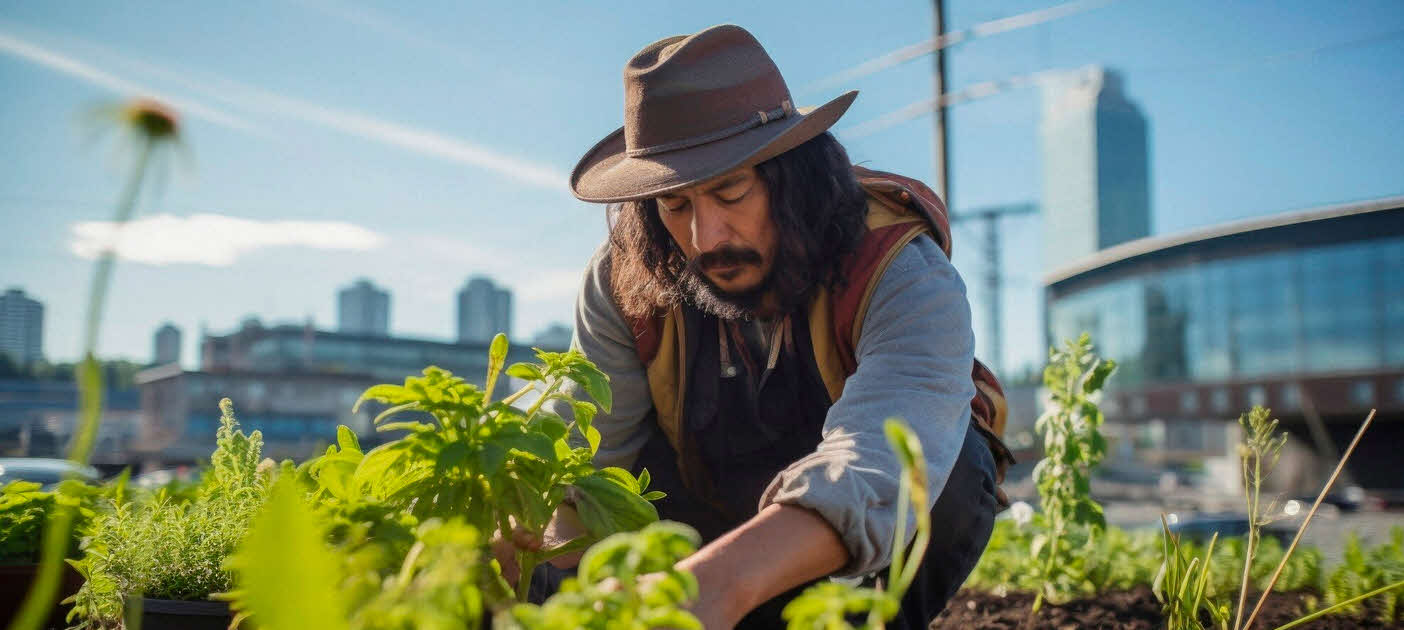Urban farming refers to cultivating, processing, and distributing food in or around metropolitan areas near residential areas. Unlike traditional agriculture, which is often done in rural areas, the urban farming concept helps people get closer to food because they produce it themselves.
The urban farming initiative started in Cuba when there was a traffic ban so that people could not get food, and that's when the locals began urban farming techniques. In recent years, urban farming has attracted many city residents who are concerned about food availability. Rapid urbanization and population growth bring challenges in terms of access to affordable, nutritious food.
This article will discuss urban farming initiatives and their benefits for food security and sustainability in urban areas.
Urban Farming Techniques
Urban farming initiatives include various techniques and types, each with unique challenges. Let's read more below!
1. Rooftop Garden
As the name suggests, a rooftop garden is a garden created on the roof of a building, such as a small housing complex, a shopping center, or a commercial building. The abundant sunlight makes the roof a suitable garden area for cultivating various vegetables. If you don't have a yard, you can use a roof.
When it's harvest time, you can immediately cook and enjoy the vegetables from your garden. Isn't that exciting?
2. Vertical Farming
Vertical farming, also called a vertical garden, uses vertical space, such as walls, to grow plants. It is a land-saving technique and saves pesticides and fertilizers, as the planting methods are done in stages. Vertical farming is often used for ornamental plants because it is convenient and can be arranged according to specific motifs. Hydroponics and aeroponics are also popular types of vertical farming, where people can consume their harvest.
3. Pots and Polybags
Many urban people use pots and polybags for gardening because they save space and can be done even in tiny homes. Pots and polybags come in various sizes, which can be selected and adjusted to our desired plant size.
One advantage of this technique is that it is easy to move, so it can adapt to weather conditions, such as being placed outside on a sunny day to get more sunlight. The cost is relatively cheap, and the drainage system can be easily controlled.
4. Aquaponics and Hydroponics
This urban farming technique does not require land because it relies on water. Aquaponics combines aquaculture (fish farming) with hydroponics (growing plants in water) in a mutually symbiotic relationship, where fish waste becomes plant nutrition. In contrast, the plants help purify the water for the fish. Hydroponics, on the other hand, is a growing technique carried out in nutrient-rich water solutions.
The Role of Urban Farming in Food Security
Urban farming presents various solutions to food security challenges, such as:
1. Ease of Getting Fresh Products
By bringing food production closer to consumers in urban areas, urban farming reduces the distance products travel from farm to plate. Short distribution also means reducing the carbon footprint, from processing raw materials and storage to distribution. Apart from that, the product also arrives faster and fresher!
2. Increase Green Open Space
Urban areas tend to be densely packed with buildings or housing, so few parks or green open spaces exist. Green open spaces are perfect for reducing city pollution so that the air becomes cleaner and fresher. Urban farming can utilize narrow, unused areas such as roofs, balconies, or walls as green space.
3. Improve Physical and Mental Health
Cultivating food using urban farming techniques can enable people to engage in light physical activity, improving their health regularly. Apart from that, farming routines can also reduce stress and improve mood after busy activities.
Suppose you want to play a role in protecting the earth from the climate crisis by building green open spaces and increasing food security through urban farming; you are on the right path! However, if you want to grow plants as well as personal finances, you can use the Invest Better on Live Better feature in the digibank by DBS app. Just by setting aside starting from IDR 100 thousand, you can begin green investing in companies that prioritize financial profits, use environmentally friendly technology, provide justice for their employees, and be transparent.
Let's start taking part in preserving the earth!





